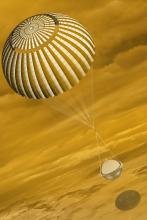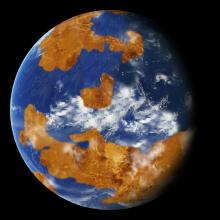Listen to today's episode of StarDate on the web the same day it airs in high-quality streaming audio without any extra ads or announcements. Choose a $8 one-month pass, or listen every day for a year for just $30.
You are here
Moon and Venus
The Moon and the planet Venus put on a great show early tonight. Venus is the brilliant “evening star.” It stands just above the Moon.
The Moon is a thin crescent — the Sun lights up only about one-tenth of the lunar hemisphere that faces our way. As the twilight begins to fade, you can make out the entire lunar disk. It’s bathed in sunlight reflected from Earth.
Since the invention of the telescope, many sharp-eyed observers have noticed a similar glow on Venus. It has nothing to do with Earth, though — the two planets are just too far apart. And it might not even be real.
The glow on Venus is most often seen when the planet is an evening crescent, as it is now. In fact, it’s never been recorded when the planet was more than about 30 percent “full.”
It was first reported in 1643. It was called “ashen light” because it looks faint and grayish. And it’s been observed many times since then.
Scientists have proposed many explanations for the glow. Some have said it’s produced by oxygen atoms in the upper atmosphere that are “energized” by the Sun. Others have suggested it’s caused by big lightning storms. And still others say it’s only an illusion; the glare of the bright crescent, combined with poor viewing conditions, can convince the eye it’s seeing something that’s not really there.
If you have a small telescope, you can check it out for yourself — scanning the night on Venus for the possible glow of the ashen light.
Script by Damond Benningfield





